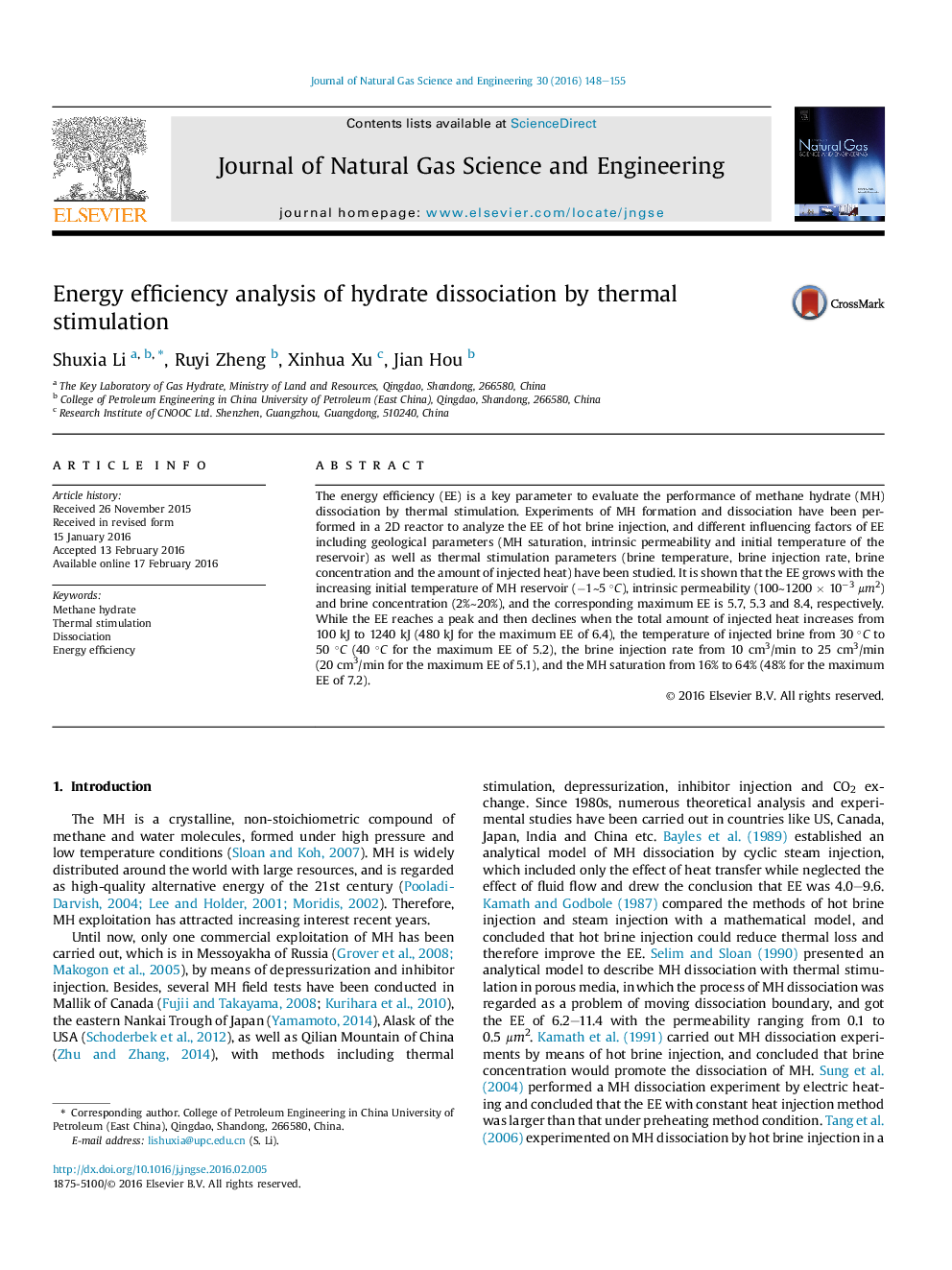| Article ID | Journal | Published Year | Pages | File Type |
|---|---|---|---|---|
| 1757158 | Journal of Natural Gas Science and Engineering | 2016 | 8 Pages |
Abstract
The energy efficiency (EE) is a key parameter to evaluate the performance of methane hydrate (MH) dissociation by thermal stimulation. Experiments of MH formation and dissociation have been performed in a 2D reactor to analyze the EE of hot brine injection, and different influencing factors of EE including geological parameters (MH saturation, intrinsic permeability and initial temperature of the reservoir) as well as thermal stimulation parameters (brine temperature, brine injection rate, brine concentration and the amount of injected heat) have been studied. It is shown that the EE grows with the increasing initial temperature of MH reservoir (â1â¼5 °C), intrinsic permeability (100~1200 Ã 10â3 μm2) and brine concentration (2%â¼20%), and the corresponding maximum EE is 5.7, 5.3 and 8.4, respectively. While the EE reaches a peak and then declines when the total amount of injected heat increases from 100 kJ to 1240 kJ (480 kJ for the maximum EE of 6.4), the temperature of injected brine from 30 °C to 50 °C (40 °C for the maximum EE of 5.2), the brine injection rate from 10 cm3/min to 25 cm3/min (20 cm3/min for the maximum EE of 5.1), and the MH saturation from 16% to 64% (48% for the maximum EE of 7.2).
Related Topics
Physical Sciences and Engineering
Earth and Planetary Sciences
Earth and Planetary Sciences (General)
Authors
Shuxia Li, Ruyi Zheng, Xinhua Xu, Jian Hou,
